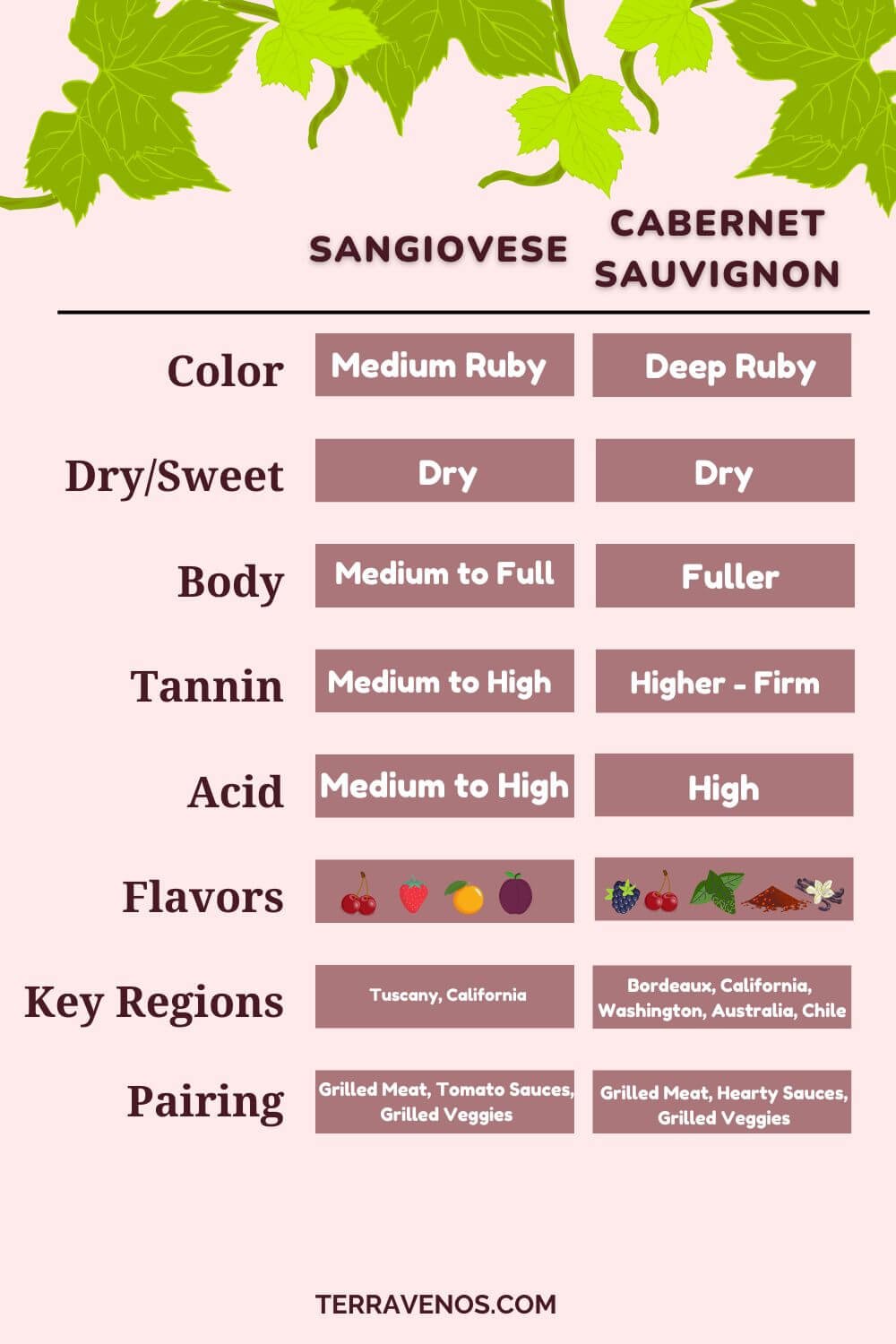
If you’re just getting into wine, you will be faced with a choice: Cabernet Sauvignon or Sangiovese? Which will you choose?
Sangiovese has a medium body, high acid and tannins, and crunchy cherry and herbal notes. Cabernet Sauvignon has a heavier body, firmer tannins, black fruit, mint, and spice. Both are used in blends and single-varietal wines, and can make bulk wines and premium bottles.
Here’s what you need to know about the differences between Cabernet Sauvignon and Sangiovese.
- Sangiovese Basics: Easy-drinking Italian
- Cabernet Sauvignon: Bold and Broody
- Wine Comparison: Sangiovese vs. Cabernet Sauvignon
- Sangiovese vs. Cabernet Sauvignon Winemaking
- Sangiovese vs. Caberent Sauvignon: Food Pairings and Serving Temperature
- Which Is More Expensive, Sangiovese vs. Cabernet Sauvignon
- Which Is Better, Sangiovese or Cabernet Sauvignon?
- Final Thoughts – Sangiovese or Cabernet Sauvignon?
Sangiovese Basics: Easy-drinking Italian
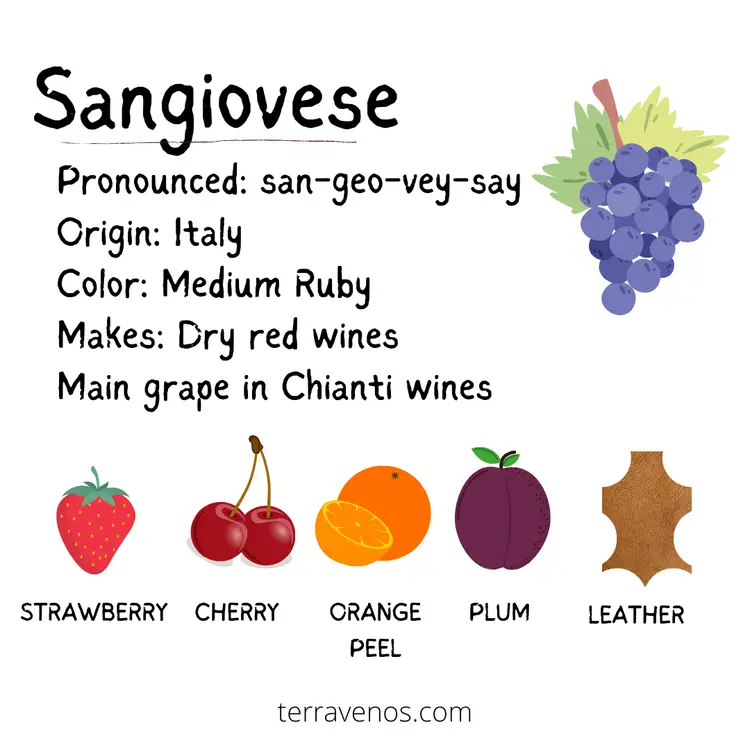
At home in Italy, Sangiovese plays a starring role in the country’s wine and food culture. Cultivated predominantly in regions like Tuscany and Emilia-Romagna, Sangiovese has a medium to full body. Its flavor profile showcases red fruit notes, like crunchy cherries and raspberries, complemented by subtle herbal undertones and a touch of earthiness. (Here’s a full guide to Sangiovese.)
While Italy’s still the world’s main producer of Sangiovese, offering a diverse range of bottles that cater to entry-level budgets and premium lifestyles, you’ll also find delicious Sangio made in California as well.
Fun Wine Fact: Love Chianti? You’re drinking Sangiovese! Check out this quick post on how to buy Chianti along with a print-and-carry shopping guide.
Cabernet Sauvignon: Bold and Broody
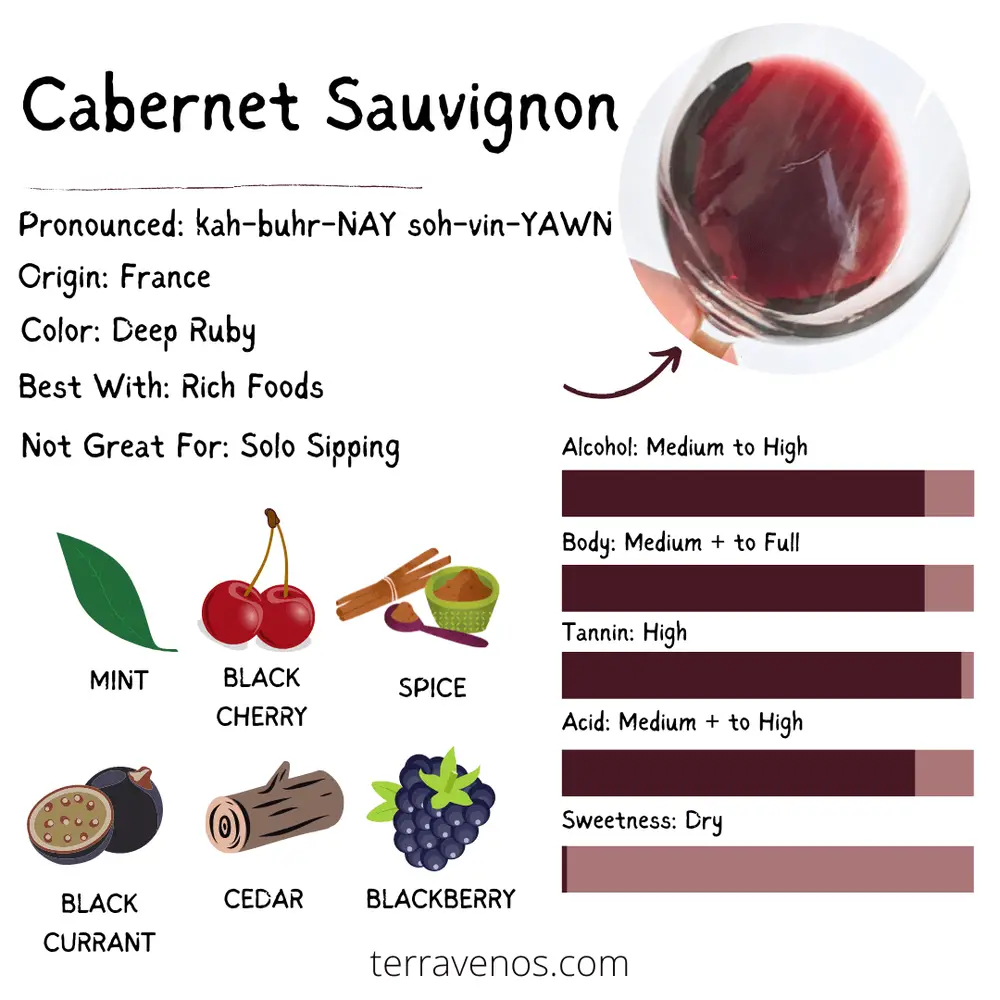
From the Bordeaux region of France, we get Cabernet Sauvignon. Cabernet will have a medium + to full body, higher alcohol, and high tannins. This is a wine with structure. You’ll taste blackberry, black currant, black plum, maybe even black licorice, along with a minty undertone.
Cabernet Sauvignon is often oaked, so expect some mocha, coffee, chocolate, and smoke.
Today, while Bordeaux remains a leader in Cabernet Sauvignon wine production, you can find excellent expressions from regions like Napa Valley, Australia, Washington State, and even Chile and Argentina. This is an international variety that’s grown wherever grapes are found. Here’s a full post on Cabernet Sauvignon if you’re curious for more.
Fun Wine Fact: Cabernet Sauvignon is one of the main grapes used to make traditional Bordeaux blend wines, along with Merlot, Cabernet Franc, Petit Verdot, Malbec, and Carmenere.
Wine Comparison: Sangiovese vs. Cabernet Sauvignon
Check out this side-by-side-comparison of Sangiovese and Cabernet Sauvignon.

Sangiovese Wine Profile:
- Sweetness: Sangiovese is typically produced in a dry style, offering minimal residual sugar.
- Alcohol: Sangiovese wines generally have a moderate alcohol content, ranging from around 13% to 14.5% ABV.
- Body: Sangiovese has a medium body. You may come across fuller-bodied expressions in premium Sangiovese wines.
- Acid: Sangiovese has medium plus acid. This higher acid level makes the red fruit taste bright and fresh.
- Tannin: Medium, and textured. If the grapes don’t fully ripen (cooler years), this can add herbal notes to your Sangiovese wine.
- Flavor and Aroma Intensity: Sangiovese has red cherries, raspberries, and hints of herbs and earthiness.
- Flavors: The flavor profile often includes notes of red berries, subtle spice, and herbal undertones.
Cabernet Sauvignon Wine Profile:
- Sweetness: Cabernet Sauvignon is almost always dry. Some inexpensive, entry-level wines may have a little sweetness to them for the mass market.
- Alcohol: Cabernet Sauvignon typically runs higher in alcohol, 13.5% to 15% isn’t uncommon. This is a late-ripening grape, meaning it accumulates more sugar that can ferment into alcohol, resulting in higher alcohol wines.
- Body: Cabernet Sauvignon is known as a full-bodied, deep, rich red wine, though you may find medium-bodied expressions from cooler growing regions.
- Acid: Cabernet Sauvignon tends to have high acid, similar to Sangiovese, that gives it’s black fruit a nice crispy crunchy.
- Tannin: Cabernet Sauvignon has high tannins that are chewy and pronounced. This is a signature part of Cab Sav’s style.
- Flavor and Aroma Intensity: Cabernet Sauvignon will have pronounced aromas of blackberries, mint (maybe even a grassy note if the grapes are underripe), and spice from oak.
- Flavors: The flavor profile tends towards black fruit, instead of Sangiovese’s red fruit.
Are Sangiovese and Cabernet Sauvignon Similar?
Sangiovese and Cabernet Sauvignon share higher levels of acidity. Both wines are well-suited for food pairing, making them great go-to wines for meals. Both wines are used in blends: Sangiovese goes into Chianti and Cabernet Sauvignon crafts Bordeaux blends.
What Is the Difference Between Sangiovese and Cabernet Sauvignon?
Sangiovese typically has a medium body, while Cabernet Sauvignon leans towards a heavier body. Sangiovese often presents herbal and earthy undertones, while Cabernet Sauvignon has subtle spice notes. Sangiovese has red fruit notes, while Cabernet Sauvignon usually has black fruit notes.
Discover More:
Cabernet Sauvignon vs Cabernet Franc
Cabernet Sauvignon vs Merlot
Cabernet Sauvignon vs Malbec
Cabernet Sauvignon vs Chardonnay
Cabernet Sauvignon or Pinot Noir?
Sangiovese vs Merlot
Sangiovese vs Pinot Noir
Sangiovese vs Chianti
Sangiovese vs Syrah
Sangiovese vs. Cabernet Sauvignon Winemaking
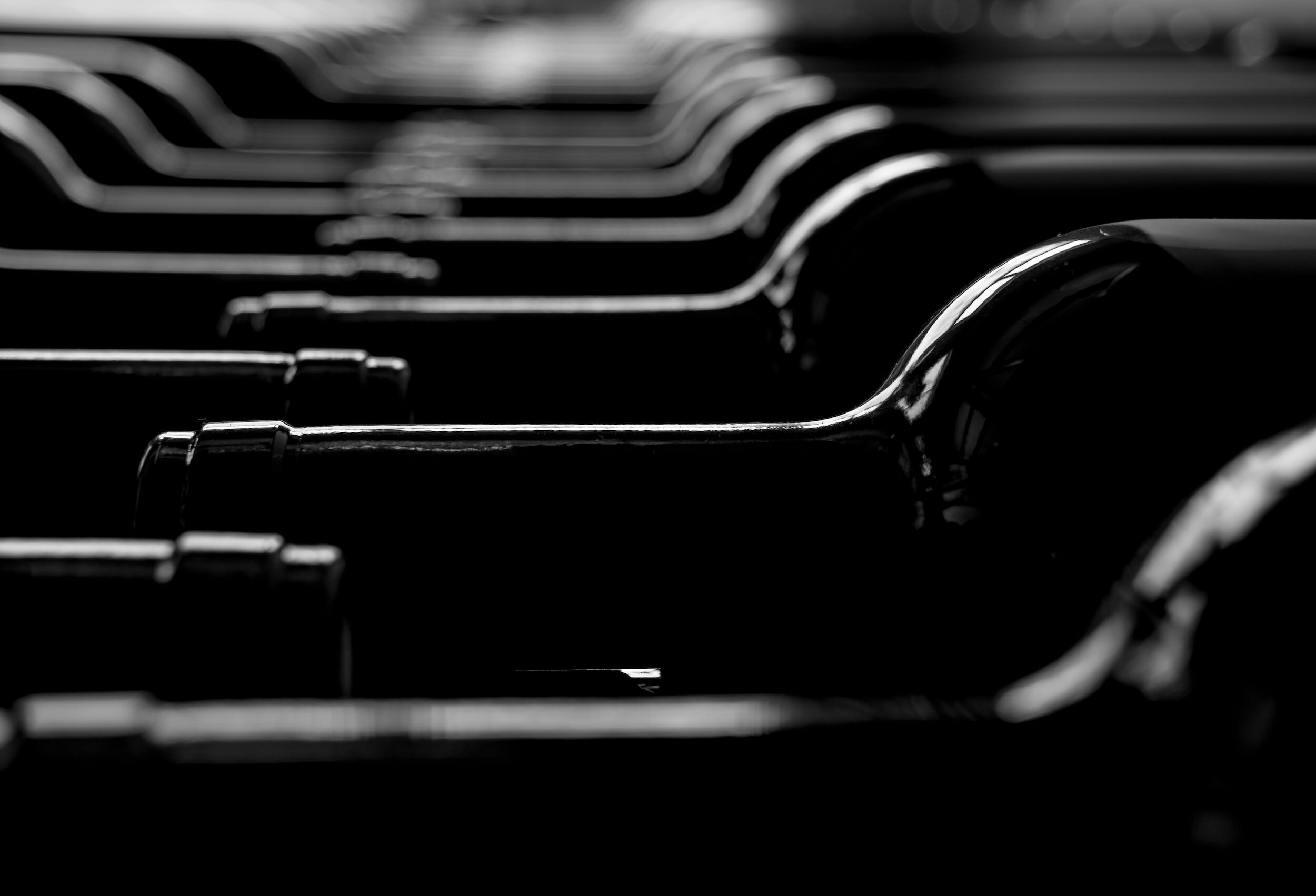
Winemakers will play with different techniques when crafting Sangiovese and Cabernet Sauvignon. This may include neutral vessels or barrels for fermentation and/or aging. The price-point for each wine determines how the winemaker shapes the wine. Inexpensive, bulk Sangiovese and Cabernet Sauvignon will be more fruit-forward than wines aged in oak.
Both of these red wines go through traditional red winemaking.
Sangiovese vs. Caberent Sauvignon: Food Pairings and Serving Temperature
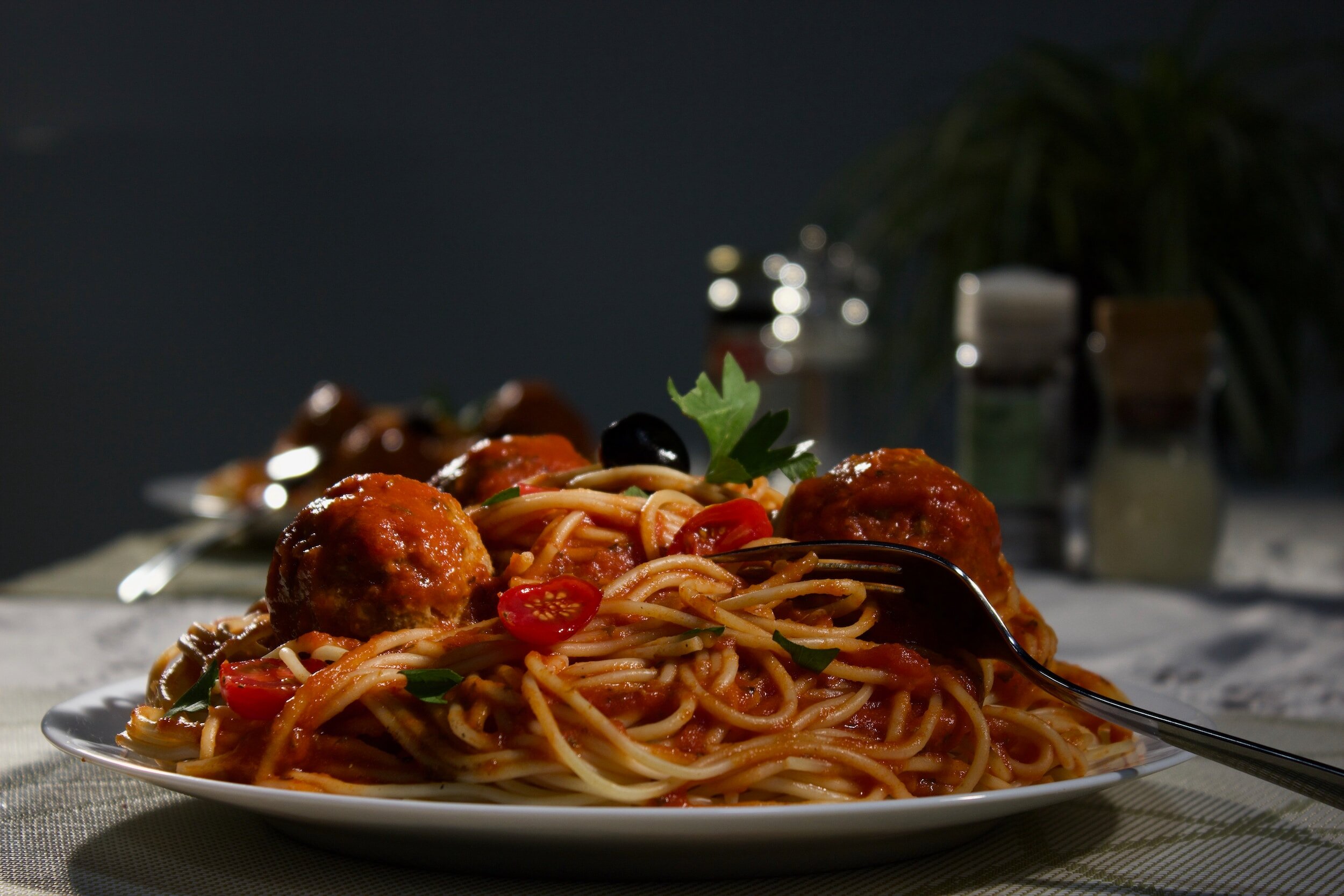
- Sangiovese’s medium body, high acidity, and bright red fruit make it a match for classic Italian dishes, including tomato-based sauces, grilled meats, and aged cheeses. Pizza night, anyone? Check out this quick guide to easy, everyday Sangiovese wine pairings.
- Caberent Sauvignon’s fuller body, and grippy tannins make it a great companion for rich, fatty foods, like hamburgers, roasted vegetables with olive oil, and, of course, steak.
Discover: Cabernet Sauvignon Cheese Pairing Guide
Serving Cabernet Sauvignon and Sangiovese Comparison
| Aspect | Sangiovese | Cabernet Sauvignon |
|---|---|---|
| Serving Temp | 60-65°F | 60-65°F |
| Decanting Recommendations | Not necessary, but improves with aeration | 1-2 hours to enhance flavors |
| Glass Shape | Tulip-shaped | Bordeaux glass |
Both Cabernet Sauvignon and Sangiovese are best served slightly chilled. Place them in the refrigerator for approximately 15-20 minutes before serving to reach the ideal temperature. You should be able to enjoy most Cabernet Sauvignon wines within 15-20 minutes after opening (decant fuller styles and aged bottles), while Sangiovese, especially younger, tight wines, can benefit from aeration.
Helpful Wine Drinking Tip: Inexpensive, entry level wines rarely benefit from decanting. Give your $5 Sangio or Cab a good swirl and swig.
Which Is More Expensive, Sangiovese vs. Cabernet Sauvignon
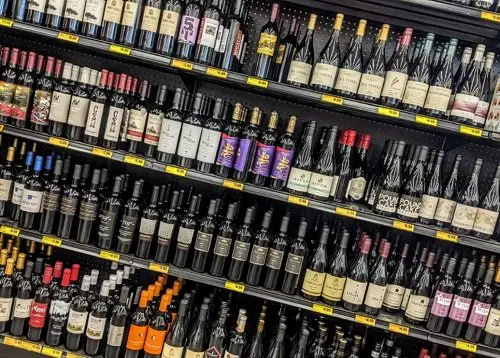
The price you pay for a bottle of wine will depend on many different factors. In general, Cabernet Sauvignon will be more expensive than Sangiovese for similar quality levels. Much of this has to do with marketing and the wine’s popularity and the price of vineyard land where Cabernet grows. Regardless, you should be able to find Cav Sav and Sangiovese at all price points and for every budget.
Sangiovese Wine Price
- Entry level Sangiovese: Under $10 USD
- Premium Sangiovese: $15-$25 USD
- Super-Premium Sangiovese $30-$50 USD
Cabernet Sauvignon Wine Price
- Extreme value Cabernet Sauvignon wines are under $10 USD.
- Decent drinking Cabernet Sauvignon wines are often available within the $20 to $30 price range, offering good value for the quality they provide. These wines showcase the classic characteristics of Cabernet Sauvignon without breaking the bank.
- If you’re seeking premium Cabernet Sauvignon wines, there are higher-priced options available. These bottles, priced around $50 to $100 or higher, offer exceptional complexity and aging potential.
Helpful Tip: Here’s a full breakdown of how a wine bottle gets priced if you’re curious about that sort of thing.
Which Is Better, Sangiovese or Cabernet Sauvignon?

If you enjoy red wines with a medium body and vibrant acidity, bright red fruit, and chewy tannins, then, Sangiovese is for you. If you prefer fuller-bodied red wines with robust tannins and layers of black fruit, then try Cabernet Sauvignon.
Final Thoughts – Sangiovese or Cabernet Sauvignon?
Both Sangiovese and Cabernet Sauvignon have their own place in your best wine life. A great first-step is to host a side-by-side wine tasting to compare the two wines.
Grab two bottles of similarly priced Sangiovese and Cabernet Sauvignon, invite over some friends, and uncork these two beautiful reds.
But don’t stop there! Make sure to explore different producers and regions. You’ll soon tease out the mystery of wine that keeps us all coming back for more.
Thirsty for More?
If you’re passionate about boosting your wine knowledge, consider hosting your own wine tasting for beginners.
Explore other wine comparisons: Chenin Blanc vs. Sauvignon Blanc and Cabernet Sauvignon vs Cabernet Franc.
Delicious wines can be found at every price point, here’s how to find great wines under $50.
Don’t forget to read about rosé wines if you enjoy the delightful world of light pink wines!




